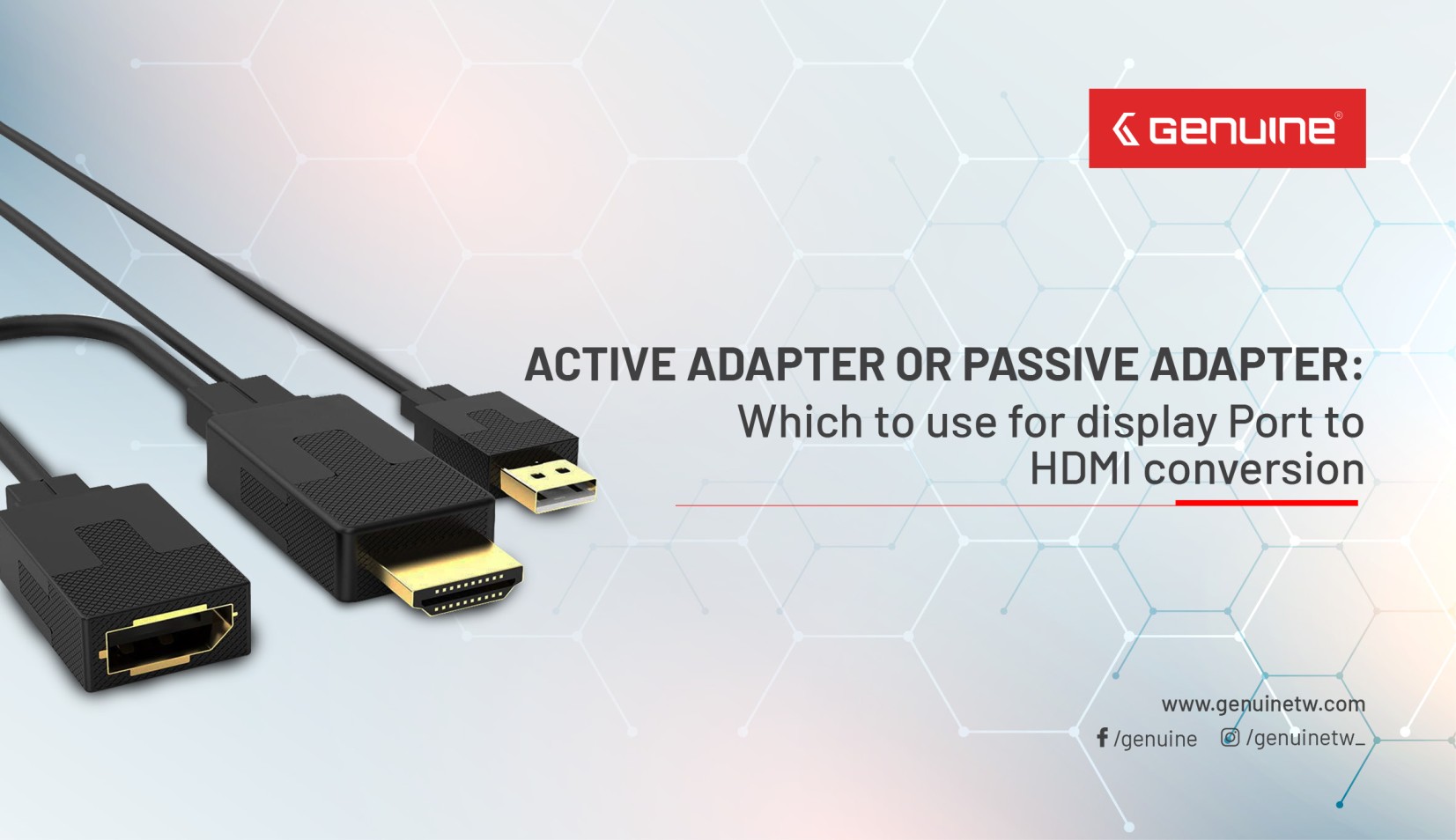
Active Adapter Or Passive Adapter: Which To Use For DisplayPort To HDMIConversion?
If your video source supports dual-mode DisplayPort (DP++), you can use a passive adapter to send DisplayPort video to a single-link DVI or HDMI monitor.An active DisplayPort adapter converts both single-mode and dual-mode output, so your connected video sources don’t have to support DP++.
What is the difference between a passive and active DisplayPort converter?
One will need to consider the difference between passive and active adapters, when you convert video from a source that uses DisplayPort or Mini DisplayPort to DVI or HDMI (for example, a computer to a monitor).
If the source supports dual-mode DisplayPort (also known as DP++), then you can use a passive adapter because the source can perform the conversion.
If the source does not support DP++, then you need to use an active converter, which includes additional chips to perform the conversion. Thunderbolt ports support DP++ natively. To run multiple monitors from the same computer, refer to the Active Adapters section below.
Passive Adapters
Passive adapters are less expensive since they do not need to include additional chips. A quick way to check whether you can use a passive adapter is to see if the DisplayPort or Mini DisplayPort source has the DP++ symbol above it. The symbol is a D with a P inside of it, with two + signs to the left, one on top of the other.
Active Adapters
Active adapters use additional chips to make the conversion inside the adapter, regardless of whether the source supports DP++. This means that active adapters are more expensive than passive adapters.
If you want to use multiple monitors with the same computer, you should use an active adapter because some video cards cannot run the maximum number of monitors while using DP++. This is especially true if the computer has more than one DisplayPort or Mini DisplayPort connection. Check with your video card manufacturer to confirm which type of adapter you need for the setup that you would like to run.
DisplayPort and HDMI were created by different consortiums, with different applications in mind. HDMI was conceived by manufacturers of displays, whereas DisplayPort comes from the IT-world. In other words, we could say that DisplayPort comes from the video source side (AV receivers, computers, etc.), and HDMI more from the visualization side (HDTV, projectors, etc.). Although certainly not a general truth, it is more likely you want to connect a DisplayPort output to an HDMI input than the other way round.
DVI, HDMI and DisplayPort
First, let’s talk about the similarities between DVI and HDMI. Because HDMI was created as a follow-up to DVI, the two standards were very similar at the beginning. They both use TMDS (Transition-Minimized Differential Signaling), a technology to transmit data. Using a simple connector-to-connector type adapter, you could switch from DVI to HDMI and vice versa. This applies to single link DVI, supporting resolutions up to 2048 x 1200. For resolutions above HD, however, there is High Speed HDMI, which diverts from the dual link DVI you would use. So you do need an active adapter to make the conversion.
Note however that HDMI does support digital audio, whereas DVI is purely a video standard. So if you want to use both audio and video, you either need to use a (quite expensive) converter, or connect the audio to the display in a different way - for example via the headphone jack.
DisplayPort (and mini DisplayPort) on the other hand, is something completely different. It uses another signal type technology and even a lower cable voltage (3.3 V instead of the 5 V of HDMI/DVI). This makes the passive DP-to-HDMI adapter even more mysterious…
Making the translation
The tippy technology that allows the use of a simple passive adapter, is called DisplayPort Dual-Mode (or DP++). Although this is an optional feature and not part of the actual standard, it is available on most consumer devices’ video cards. You might find the DP++ logo on the device, but because it is so widespread most modern consumer products don’t mention the logo either.
The theory of DP++ is actually quite simple: when the device detects an HDMI adapter attached to it, the graphics card or GPU (Graphical Processing Unit) will automatically make a translation and send HDMI TMDS signals via the video output. The pins of the DisplayPort connector are then mapped onto the HDMI pins, making the transition very simple. The system is completely plug and play and does not need any driver to work. Note however that this simple transition only applies to single-link DVI signals, so up to HD resolution. Furthermore, when you want to connect multiple DVI or HDMI monitors to a DisplayPort output, you will need an active adapter or splitter as well. Many graphics cards can’t support DP++ output to multiple monitors. Check with the customer service or the graphics card manufacturer for the type of adapter that suits your requirements the best.
